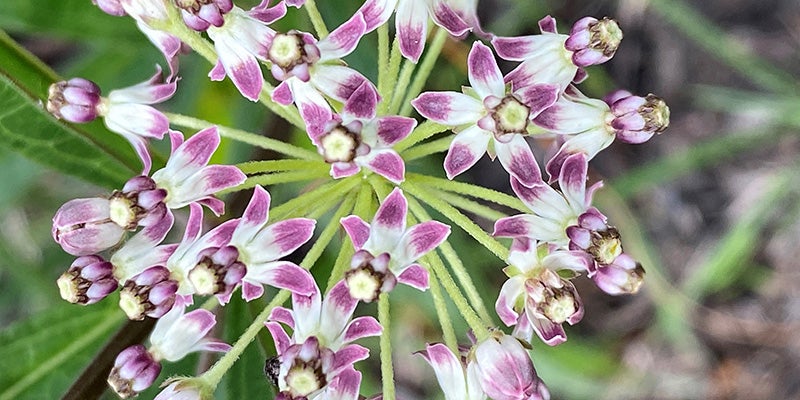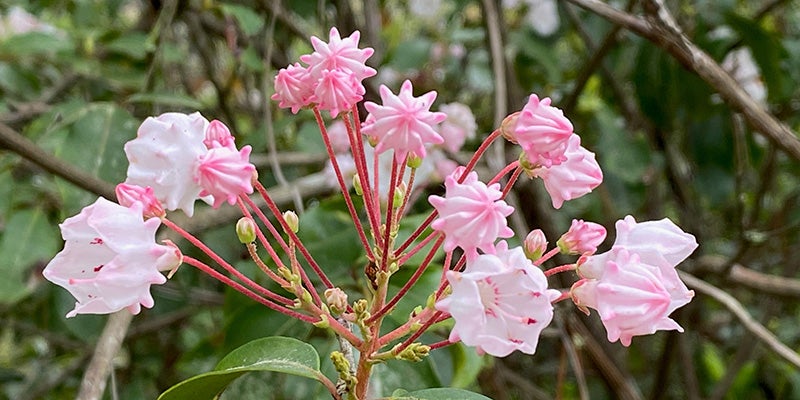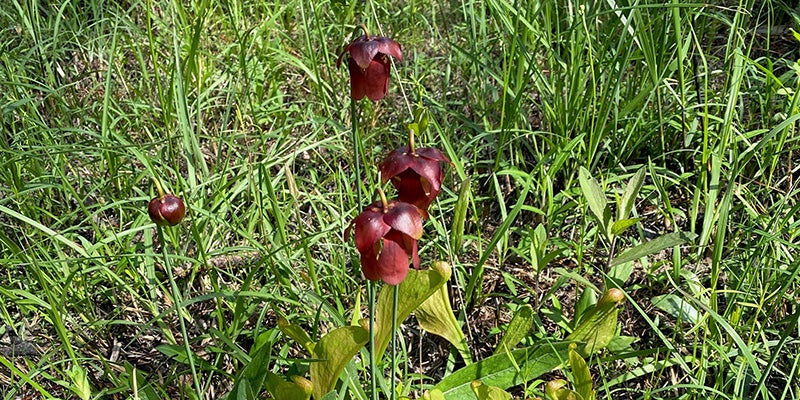Activities for exploring the natural world
Published 7:00 am Wednesday, April 15, 2020
By Patricia R. Drackett
Director, The Crosby Arboretum, Mississippi State University
Assistant Extension Professor of Landscape Architecture
The Arboretum’s Savanna Exhibit has begun its roller coaster of blooms, responding to a prescribed fire applied in February of this year. Grounds manager Terry Johnson has been snapping photos of emerging pitcher plant blooms, sunbonnets, and native longleaf milkweed, in addition to the first native orchid spotted this spring.
Two native milkweed species occur in our south pitcher plant bog, fewflower milkweed (Asclepias lanceolata), and longleaf milkweed (Asclepias longifolia). Longleaf milkweed is blooming now. Its small purple and white bloom clusters are exquisitely formed, although sometimes you must look at the delicate flowers closely to realize they are indeed purple. The tall fewflower milkweed has bright red-orange blooms which shine like tiny beacons, and these will be towering above the savanna’s grasses in a few short months.
Do you have a young plant appreciator in your family? You may enjoy creating your own pressed herbarium specimens.
Plant presses do not need to be fancy or expensive. A floral design student from Mississippi State University student once showed me a delightfully petite and portable handmade plant press she had constructed. It was small enough to be tucked into her pocket or backpack and was only about the size of a postcard. She had assembled her press using materials you will most likely have on hand – cardboard, newspaper, and a few rubber bands.
Even an old phone book can be used to press specimens. If you want something a bit larger and more durable, the Internet abounds with instructions for building more elaborate plant presses.
Perhaps you have a household member who has a shop and is looking for a project. Just keep in mind that these can be a bit heavy if you are carrying it on a long hike into the field.
Perhaps you’ve seen pressed plant specimens in home decorating catalogs or stores that have been framed and used as wall art. They can cost a pretty penny! Ferns, because of their attractive shapes, are very popular framed subjects. Consider creating your own pressed plant specimens, as it this can be a way to own some unique “artwork” as well as a way to decorate your home for a fraction of catalog prices. If you are able to embark on this project with a child, you may be preserving some family treasures as well.
Used frames may be obtained very inexpensively at thrift stores and painted to suit your home. If the plants you use have a special meaning, perhaps collected during a memorable vacation or from a relative’s property, that is all the better.
To identify the plants you collect, visit a website such as Southeastern Flora (http://www.southeasternflora.com). Once identified, for further information, visit a site such as the Lady Bird Johnson Wildflower Center (https://www.wildflower.org/) at the University of Texas at Austin. To reach their website quickly, either select the orange rectangle at the bottom of our website’s home page or enter the acronym “NPIN” along with the common or Latin name of the plant you wish to search for.
Learn about the type of information that is traditionally noted on herbarium specimens. You may wish to include some of this on your specimen as well, such as the location, Latin and common name, date collected, and so forth. For an example, look at specimens on a website such as SERNEC<http://www.sernec.org> (Southeast Regional Network of Expertise and Collections), funded by the National Science Foundation<https://www.nsf.gov/> (http://sernecportal.org/portal/). This site is a collection of specimen images and information from over two hundred herbaria in 14 states in the Southeastern U.S. and spans 150 years of botanical information.
To visit the website, you can just enter the acronym “SERNEC” in a search engine. It’s quite exciting to view these specimens from your armchair at close range! One perk is that you don’t have to endure the smell of mothballs, which are often used to preserve herbarium collections.
The Arboretum has a small herbarium containing over 2,000 plant specimens that were collected by Dr. Sidney McDaniel, who conducted the inventory of the existing plants at our interpretive site and associated natural areas in the mid-1980’s. A second collection of herbarium specimens was donated to the Crosby Arboretum by former University of South Mississippi professor Dr. Richard Moore.
The Crosby Arboretum is located at 370 Ridge Road in Picayune, at I-59 Exit 4.
To receive updates on activities, including when we will be open to the public again, sign up for our email listserv at “Events Updates” on the main menu on our website at http://crosbyarboretum.msstate.edu.







